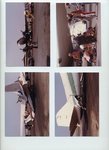FLYBOYJ
"THE GREAT GAZOO"
So just a process check here. Can you restate the point of this thread again? Is it to discuss whether UAS' are inherently more safe than manned aircraft?
Well if it goes back to the first post, the two examples Sys gave were VERY poor.




